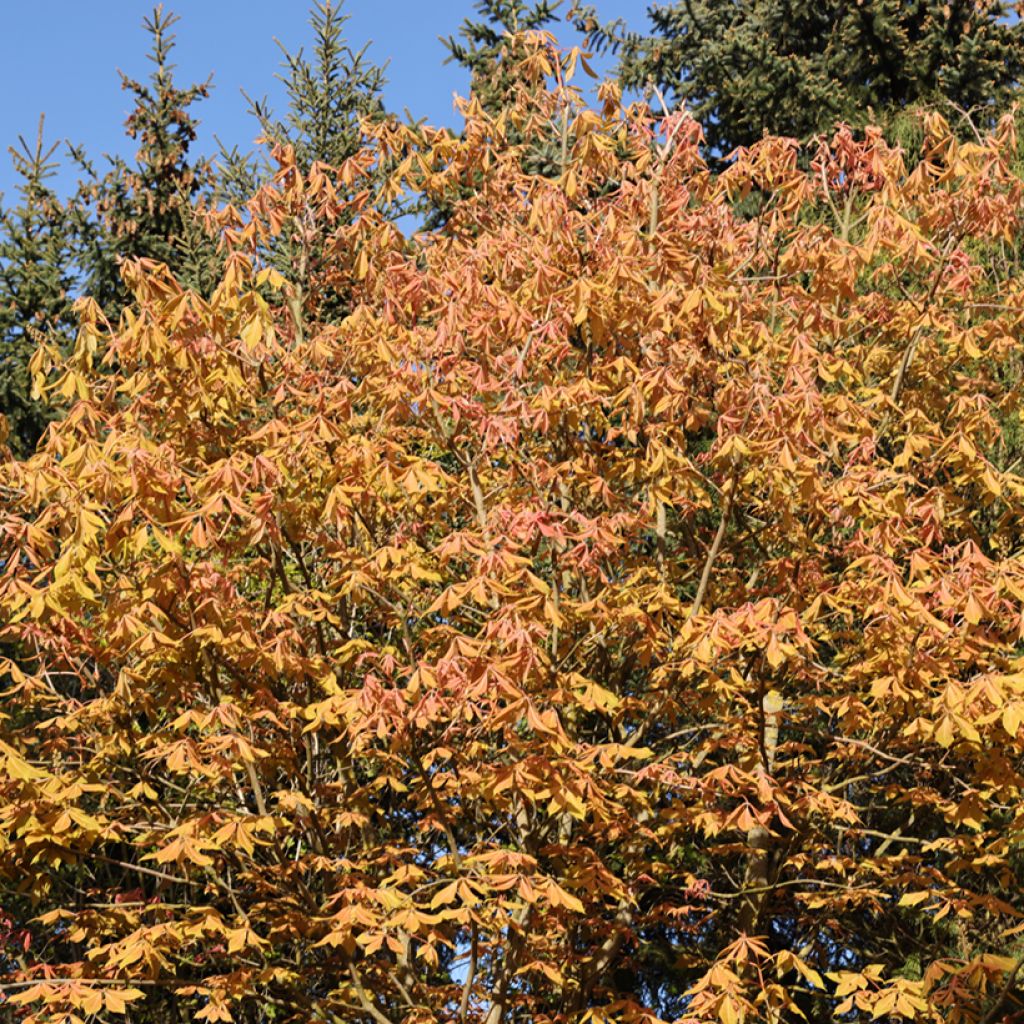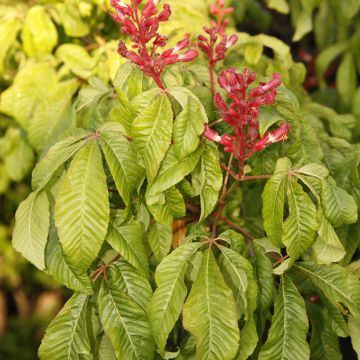

Aesculus x neglecta Erythroblastos - Carolina horse chestnut


Aesculus x neglecta Erythroblastos - Carolina horse chestnut


Aesculus x neglecta Erythroblastos - Carolina horse chestnut
Aesculus x neglecta Erythroblastos - Carolina horse chestnut
Aesculus x neglecta Erythroblastos
Carolina horse chestnut
Special offer!
Receive a €20 voucher for any order over €90 (excluding delivery costs, credit notes, and plastic-free options)!
1- Add your favorite plants to your cart.
2- Once you have reached €90, confirm your order (you can even choose the delivery date!).
3- As soon as your order is shipped, you will receive an email containing your voucher code, valid for 3 months (90 days).
Your voucher is unique and can only be used once, for any order with a minimum value of €20, excluding delivery costs.
Can be combined with other current offers, non-divisible and non-refundable.
Home or relay delivery (depending on size and destination)
Schedule delivery date,
and select date in basket
This plant carries a 24 months recovery warranty
More information
We guarantee the quality of our plants for a full growing cycle, and will replace at our expense any plant that fails to recover under normal climatic and planting conditions.

Would this plant suit my garden?
Set up your Plantfit profile →
Description
The Aesculus x neglecta 'Erythroblastos' is a remarkably colourful variety of horse chestnut tree. It is a small tree with slow growth, whose foliage changes colour, with young shoots of an incredible pink in spring. It takes on its autumn colour, a bright golden yellow, in October. Beautiful, but not abundant, its spring flowering in small pale yellow candles infused with pink blooms on a very beautiful light green and shiny foliage. Its moderate development is suitable for many gardens.
The Aesculus (x) neglecta 'Erythroblastos' is an American horticultural selection from the Brotzman nursery in Madison, Ohio. This hybrid has been awarded in England for its ornamental qualities and performance in the garden. It carries the genes of the Aesculus sylvatica, a very compact variety native to the Appalachian forests of the USA, and those of the Aesculus flava, a large tree native to the eastern United States. This horse chestnut tree shows very slow growth at first, until it is well established. It then becomes slow to moderate. With a fine and delicate appearance, this tree forms a trunk topped with a rounded crown. At the age of 15, it will measure about 5 m in height and 3 m in width. Eventually, its dimensions will rarely exceed 6 m in height and 4 m in width. Its large branches produce smooth, slightly sticky buds.
The young shoots of the 'Erythroblastos' horse chestnut tree, remarkably coloured in fluorescent pink, unfold into large palmate leaves, 15 cm wide, divided into 5 elliptical and oblong leaflets. Their colour quickly turns to light green. They turn golden yellow in October before falling. The inflorescences, in the form of small upright panicles, arrive depending on the climate in the month of May or early June. The small tubular flowers open in pale yellow, then darken to salmon pink. The flowering is followed by the formation of oval fruits, 5-7 cm long. The trunk of this small tree is covered with smooth, grey bark.
The Aesculus neglecta 'Erythroblastos' prefers a sunny, non-burning, or semi-shaded location. It is used as a standalone tree in a moderately sized garden. If space allows, it can also be used in a mass planting of large shrubs or small flowering or autumn foliage trees. It forms a beautiful combination with a blue-flowered Hydrangea such as the Hydrangea serrata Blue Bird, a large rhododendron, the Parrotia persica 'Vanessa', the Hydrangea quercifolia, the Neillia affinis, and the Canadian serviceberry 'Forest Pansy', for example.
Report an error about the product description
Aesculus x neglecta Erythroblastos - Carolina horse chestnut in pictures


Plant habit
Flowering
Foliage
Botanical data
Aesculus
x neglecta
Erythroblastos
Sapindaceae
Carolina horse chestnut
Marronnier aurore, Marronnier négligé
Cultivar or hybrid
Other Aesculus - Horse Chestnut
View all →Planting and care
Aesculus neglecta 'Erythroblastos' should be planted in spring or autumn in a deep, moist, fertile, slightly acidic to neutral soil. It doesn't tolerate limestone well. Place it in a sunny, non-burning or partially shaded location. Deep ploughing is recommended before planting. Allow it enough space, as it can reach a width of 4m for the crown. Water and mulch to maintain soil moisture. Fertilise in spring. Prune in February by removing old stems. This variety is not susceptible to the diseases that usually affect our large horse chestnut trees.
Planting period
Intended location
Care
This item has not been reviewed yet - be the first to leave a review about it.
Similar products
Haven't found what you were looking for?
Hardiness is the lowest winter temperature a plant can endure without suffering serious damage or even dying. However, hardiness is affected by location (a sheltered area, such as a patio), protection (winter cover) and soil type (hardiness is improved by well-drained soil).

Photo Sharing Terms & Conditions
In order to encourage gardeners to interact and share their experiences, Promesse de fleurs offers various media enabling content to be uploaded onto its Site - in particular via the ‘Photo sharing’ module.
The User agrees to refrain from:
- Posting any content that is illegal, prejudicial, insulting, racist, inciteful to hatred, revisionist, contrary to public decency, that infringes on privacy or on the privacy rights of third parties, in particular the publicity rights of persons and goods, intellectual property rights, or the right to privacy.
- Submitting content on behalf of a third party;
- Impersonate the identity of a third party and/or publish any personal information about a third party;
In general, the User undertakes to refrain from any unethical behaviour.
All Content (in particular text, comments, files, images, photos, videos, creative works, etc.), which may be subject to property or intellectual property rights, image or other private rights, shall remain the property of the User, subject to the limited rights granted by the terms of the licence granted by Promesse de fleurs as stated below. Users are at liberty to publish or not to publish such Content on the Site, notably via the ‘Photo Sharing’ facility, and accept that this Content shall be made public and freely accessible, notably on the Internet.
Users further acknowledge, undertake to have ,and guarantee that they hold all necessary rights and permissions to publish such material on the Site, in particular with regard to the legislation in force pertaining to any privacy, property, intellectual property, image, or contractual rights, or rights of any other nature. By publishing such Content on the Site, Users acknowledge accepting full liability as publishers of the Content within the meaning of the law, and grant Promesse de fleurs, free of charge, an inclusive, worldwide licence for the said Content for the entire duration of its publication, including all reproduction, representation, up/downloading, displaying, performing, transmission, and storage rights.
Users also grant permission for their name to be linked to the Content and accept that this link may not always be made available.
By engaging in posting material, Users consent to their Content becoming automatically accessible on the Internet, in particular on other sites and/or blogs and/or web pages of the Promesse de fleurs site, including in particular social pages and the Promesse de fleurs catalogue.
Users may secure the removal of entrusted content free of charge by issuing a simple request via our contact form.
The flowering period indicated on our website applies to countries and regions located in USDA zone 8 (France, the United Kingdom, Ireland, the Netherlands, etc.)
It will vary according to where you live:
- In zones 9 to 10 (Italy, Spain, Greece, etc.), flowering will occur about 2 to 4 weeks earlier.
- In zones 6 to 7 (Germany, Poland, Slovenia, and lower mountainous regions), flowering will be delayed by 2 to 3 weeks.
- In zone 5 (Central Europe, Scandinavia), blooming will be delayed by 3 to 5 weeks.
In temperate climates, pruning of spring-flowering shrubs (forsythia, spireas, etc.) should be done just after flowering.
Pruning of summer-flowering shrubs (Indian Lilac, Perovskia, etc.) can be done in winter or spring.
In cold regions as well as with frost-sensitive plants, avoid pruning too early when severe frosts may still occur.
The planting period indicated on our website applies to countries and regions located in USDA zone 8 (France, United Kingdom, Ireland, Netherlands).
It will vary according to where you live:
- In Mediterranean zones (Marseille, Madrid, Milan, etc.), autumn and winter are the best planting periods.
- In continental zones (Strasbourg, Munich, Vienna, etc.), delay planting by 2 to 3 weeks in spring and bring it forward by 2 to 4 weeks in autumn.
- In mountainous regions (the Alps, Pyrenees, Carpathians, etc.), it is best to plant in late spring (May-June) or late summer (August-September).
The harvesting period indicated on our website applies to countries and regions in USDA zone 8 (France, England, Ireland, the Netherlands).
In colder areas (Scandinavia, Poland, Austria...) fruit and vegetable harvests are likely to be delayed by 3-4 weeks.
In warmer areas (Italy, Spain, Greece, etc.), harvesting will probably take place earlier, depending on weather conditions.
The sowing periods indicated on our website apply to countries and regions within USDA Zone 8 (France, UK, Ireland, Netherlands).
In colder areas (Scandinavia, Poland, Austria...), delay any outdoor sowing by 3-4 weeks, or sow under glass.
In warmer climes (Italy, Spain, Greece, etc.), bring outdoor sowing forward by a few weeks.


















































